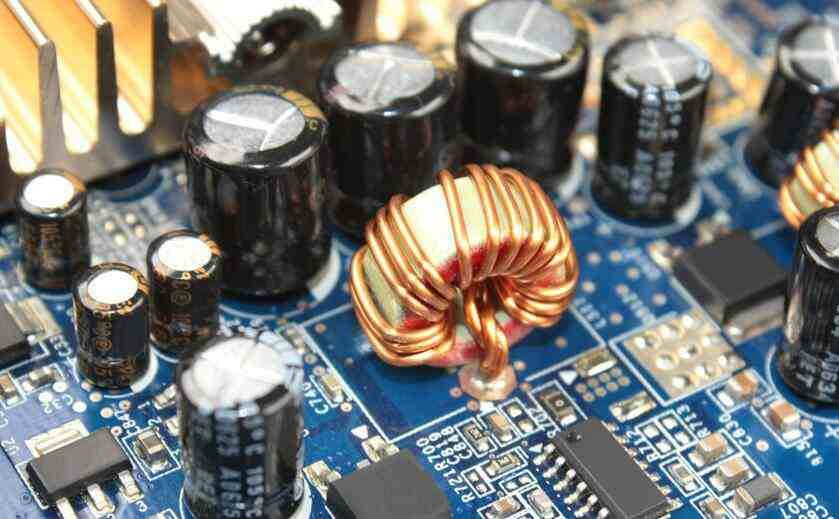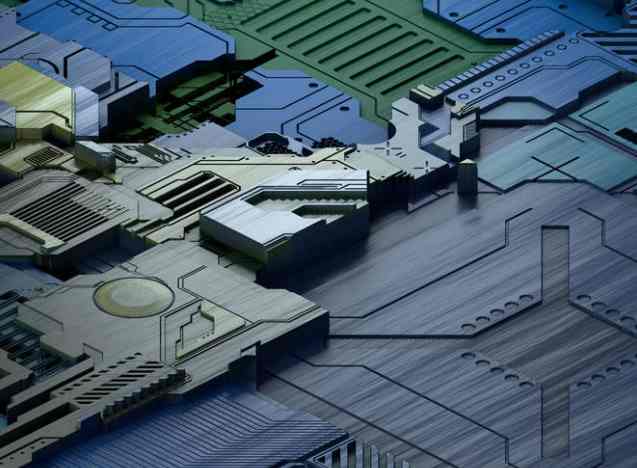
In terms of multi-layer PCB research and development and production process, some quality problems often occur, especially the inner layer of multi-layer PCB, with the development of PCB circuit board to higher density, wiring density is getting higher and higher, many inner and outer layer wire width and spacing only 0.10-0.075mm, small holes and microholes which have buried holes, blind holes, etc. Such as the ball grid array - an assembly structure. According to the requirements of the assembly structure form, the design and manufacture of PCB must meet its outer wiring density of 0.10-0.125mm and the inner layer of 0.10-0.075mm, aperture of 0.25-0.35mm and other design requirements and is multi-layer board. This requires very precise alignment between layers. However, due to the existence of process error, the inner short circuit of multilayer PCB often occurs. Internal short circuit is the biggest quality problem of multi-layer PCB, because if there is a short-circuit defect inside the multi-layer PCB, it will become difficult to repair the product. If such defects are found after electrical installation, huge economic losses will be caused. Therefore, in order to solve the problem of internal short circuit of multilayer PCB, we must first find out the main technological factors causing the internal short circuit, so as to take the corresponding technological countermeasures.
1. Influence of raw materials on inner short circuit:
The size stability of multilayer PCB material is the main factor affecting the positioning accuracy of the inner layer. The influence of thermal expansion coefficient of substrate and copper foil on the inner layer of multilayer PCB must also be considered. From the analysis of the physical properties of the substrate used, laminates contain polymers, whose main structure will change under a certain temperature, which is known as the glass transition temperature Tg. The glass transition temperature is the most important characteristic of the polymer, second only to the coefficient of thermal expansion.
Since the thermal expansion of the laminate is faster than that of the pore body, this means that the pore body is stretched along the direction of the laminate deformation. This stress condition creates a tension stress in the through-hole body. When the temperature increases, the tension stress will continue to increase. When the stress exceeds the fracture strength of the through-hole coating, the coating will fracture. At the same time, the high thermal expansion rate of laminate makes the stress on the inner wire and pad increase obviously, resulting in the cracking of the wire and pad, resulting in the short circuit of the inner layer of multi-layer PCB. Therefore, in the manufacture of high density packaging structure such as BGA for PCB board raw materials technical requirements, special analysis should be carried out carefully, the selection of substrate and copper foil thermal expansion coefficient basically to match.
2, the influence of drilling quality on inner short circuit
(1)Analysis of hole position error
In order to obtain high quality and reliable electrical connections, the connection between the pad and the conductor shall be maintained at least 50μm after drilling. To maintain such a small width, the position of the hole must be very accurate and the resulting error must be less than or equal to the dimensional tolerance required by the process. But the error of hole position depends mainly on the precision of drilling machine, the geometry of drill bit, the characteristics of cover and backing plate and the technological parameters. The accumulated experience analysis from the actual production process is caused by four aspects: the actual position of the hole relative to the vibration of the drill press caused by the amplitude, the spindle offset, the bit into the substrate point caused by the slip and the bit into the substrate due to the resistance of the glass fiber and the bending deformation caused by the cuttings. These factors will cause the inner hole deviation and short circuit possibility.
(2)According to the above deviation of hole position, in order to solve and eliminate the possibility of excessive error, it is recommended to adopt the process method of step-by-step drilling, which can greatly reduce the effect of drilling cuttings removal and drill bit temperature rise. As a result, changes in bit geometry (cross-sectional area, core thickness, taper, slot Angle, slot and length-to-strip ratio, etc.) are required to increase bit stiffness, and hole placement accuracy is greatly improved. At the same time, the correct selection of the cover plate and drilling process parameters, to ensure that the drilling hole precision within the scope of the process. In addition to the above guarantees external causes must also be the focus of attention. If the inner positioning is not correct, the through hole is offset when drilling, which also leads to the inner circuit or short circuit.
3. Influence of inner etching quality on inner short circuit
The inner layer etching process is easy to produce the final etching of the residual copper points, these residual copper is sometimes very small, if the optical tester is not used for visual detection, and it is difficult to find with the naked eye, it will be taken to the lamination process, the residual copper pressed to the inside of the multi-layer PCB, because of the high density of the inner layer, the most easy to make the residual copper between the two wires and cause the short-circuit of the multi-layer PCB inner layer.

4. Influence of laminating process parameters on inner short circuit
The inner plate in the lamination must be used to locate the positioning pin, if the pressure used when loading the plate is not uniform, the positioning hole of the inner plate will produce deformation, pressing the pressure is too large to produce shear stress and residual stress is also very large, shrinkage deformation and other reasons, will cause the inner layer of PCB short circuit and scrap.
5. Influence of negative production and use errors on inner short circuit
The circuit graphics are converted by CAD/CAM system, and finally 1:1 photographic negatives are generated for circuit image transmission. The film is then transferred to diazo negative film for production. Human and mechanical errors can occur during the conversion and generation of negative films for platemaking. After a period of statistical analysis of development and production data, there are often deviations in the following aspects:
(1) The deviation between layers occurs due to visual error when the positioning hole is punched between layers.
(2) Deviation caused by human and equipment when photodrawing negative is copied into diazo negative.
(3) The displacement phenomenon generated when the film transfers the circuit diagram to form the image leads to the deviation of the imaging hole position.
(4) The deviation of the through-hole position of the negative caused by the elongation and shrinkage of the substrate due to the influence of temperature and humidity during the preservation and use of the negative.
(5) Hole position deviation caused by human visual difference and positioning accuracy in the process of graphic transfer.
(6) Deviation caused by quality problems of the tablet base body.
These are the combined errors of the PCB manufacturing process. According to the military standard and international standards, the combined errors should not be greater than the width of the wire. If it exceeds the size range specified by the standard and process, it will cause short circuit in the inner layer of multilayer PCB. In order to ensure the quality of film production and the reliability of the quality of use, it is necessary to strengthen the monitoring and management of the process, so that the manufacturing of multi-layer PCB required by BGA structure devices, starting from the feeding of each process must develop the correct, operable and effective process methods and countermeasures.
6. Influence of positioning system method accuracy on inner short circuit
In the process of film generation, circuit graphics production, lamination, lamination and drilling, positioning must be carried out. As for the form of positioning method, it needs to be studied and analyzed carefully. These semi-finished products that need to be located will bring a series of technical problems because of the difference in positioning accuracy. A slight mistake will lead to short circuit in the inner layer of multi-layer PCB. The choice of positioning method should be determined by the accuracy, applicability and effectiveness of the selected positioning method. Multi-layer PCB interlayer alignment process has many methods, mainly including the following eight:
(1) two-hole pin positioning method.
(2) One-hole and one-slot positioning method.
(3) Three-hole or four-hole positioning method.
(4) Four-slot positioning method.
(5) MASS LAMINATE location method.
(6) alignment paste positioning method.
(7) post-etching positioning method.
(8) X-ray drilling positioning hole method.
As far as the accuracy and reliability analysis are concerned, the four-slot positioning process is suitable for the positioning and processing of six-layer PCB. Of course, there are many factors that affect the interlayer positioning accuracy of multilayer PCB. This paper discusses the comprehensive result of many factors such as light drawing film, laminated core material, upper backing plate, positioning equipment used in manufacturing, production process equipment, process environmental conditions, process technology and processing operation process. Due to the difference in positioning accuracy and the difference in process selection, it is easy to cause the deviation of the inner layer of multi-layer PCB, resulting in the quality problem of the inner layer - short circuit.






